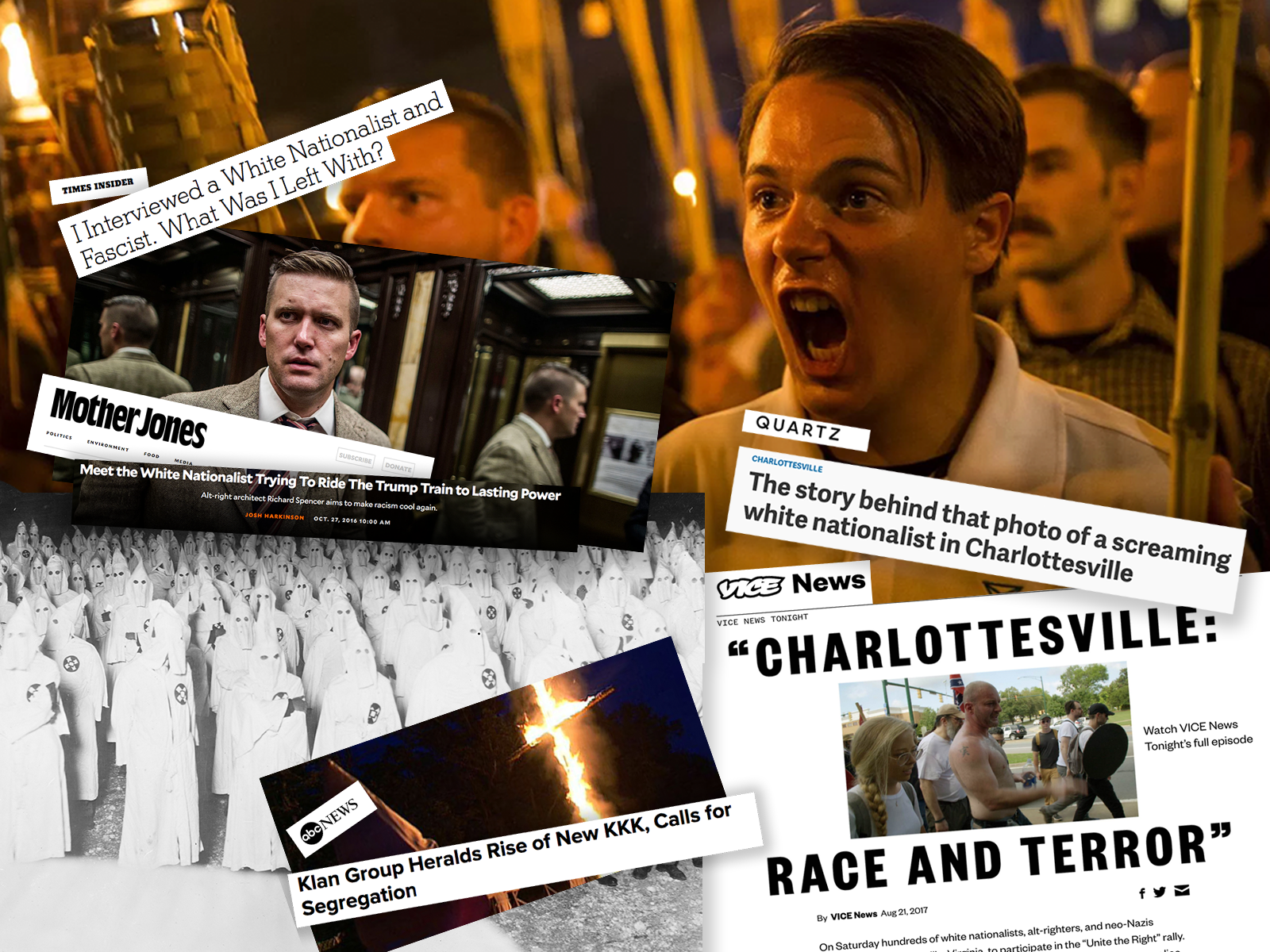
Last Fall, when I came face to face with members of the alt-right, people intent on provoking the men and women of color around me in order to videotape their angry reactions for the sake of white supremacist fund-raising, I wrote about it. I wrote about the disappointment I felt at the police response, and the appreciation I came to have for the Redneck Revolt members who were there to provide protection.
At the same time, I began paying attention to the recruitment strategies of white nationalists. I recognized the savvy nature of their efforts and the way they target aggrieved white youth. Watching their videos, I saw the danger of their appeal. A friend of mine reported that she had a white, Jewish student who said to her, “You know, I get why they seem so attractive.” We recognized the problem.
She and I proposed a workshop for the White Privilege Conference. The original idea was for us to take a close look at the recruiting strategies (the emotional and intellectual appeals) and work together to develop ways to respond. What could we say or do to pull white youth into equity-minded groups, instead of leaving them susceptible to the appeals of the alt-right? The more research we did, the more we found upsetting information. We developed a resource sheet with a number of important radio programs, articles, and books that really should be read by all anti-racist white people.
One particular radio segment was an episode of On the Media, in partnership with The Guardian US, called Face the Racist Nation, which aired on March 1, 2018. The description of the episode is as follows:
“For the past year, Lois Beckett [@loisbeckett], senior reporter at The Guardian US, has been showing up at white nationalist rallies, taking their pictures, writing down what they say. And she finds herself thinking: How did we get here? How did her beat as a political reporter come to include interviewing Nazis? And what are the consequences of giving these groups this much coverage?
In this week’s program — the culmination of a months-long collaboration between On the Media and The Guardian US — we take a deep dive into what the news media often get wrong about white supremacists, and what those errors expose about the broader challenge of confronting racism in America.”
One of the most memorable moments in the program was when they talked about how a newspaper decided to publish the registration form of the KKK in the 1940’s. The segment talked about how the media has attempted (both then and now) to cover these issues with a neutral tone, all the while amplifying the white supremacist voices. In the 1940’s, the publication of the registration form resulted in many people cutting out the form from the newspaper and sending it in.
Just this week, history repeated itself: “A Virginia newspaper has come under fire from its readers after it ran a Ku Klux Klan recruitment flyer in full on its front page.”
There are a lot of issues we need to face. I’m not even attempting to cover them all here. The workshop at the White Privilege Conference this April was messy. Not bad. Just messy. It was upsetting to watch the videos and read the essay segments from the alt-right. But we did it. As we talked about how to respond, what we found is that it simply didn’t feel that it was viable to try and come up with logical or emotional appeals that are directly counter to the messages of white supremacists. We all agreed that this approach was unlikely to be effective. What we did decide, collectively, however, was that what we need to do is pull young white youth close, listen to their concerns, attempt to relate, share our stories, and try to provide the kind of community experience that the alt-right has been providing. They, unfortunately, have been using a step-by-step process of slowly, but surely, pulling white youth into a more explicit white supremacist worldview. We need a thoughtful and strategic process too.
And just when I thought we might be alone in our thoughts, a blog post titled, When White Guilt turns to White Hate, posted by Jennifer Harvey, was published this April 19th. It captures a lot of what I’ve been feeling and worrying over for months. I strongly urge you to read it in its entirety. But, here is a piece of what feels essential.
“…I engage young white people every day who’ve been taught repeatedly that racial differences are worth celebrating. They know they’re supposed to value diversity. But they also know celebrating their “whiteness” is problematic.
Meanwhile these same white students have had almost no support in developing a healthy sense of their own identity. I don’t mean healthy as in believing “white” should be embraced as a cultural parallel to “black” (it’s not). I don’t mean downplaying the truth of white behaviors or histories. I don’t mean ignoring the social structures that insulate white Americans from harms communities of color face every day.
I mean healthy as developmental terms—a state in which white people are comfortable in our skin and, at the same time, committed to anti-racism. I mean a sense of identity firmly invested in creating racial equity and equipped with tools to actively do that. I mean a sense of self that understands I, as a white person, have a constructive role to play in racial-justice building.
Many of our youth are being brought up in schools, churches, and organizations where there’s much talk of diversity and equity but few resources teaching white youth how to live out those values themselves as white kids. Neither do white youth have many mentors modeling how to be part of making justice real in their communities. Already confused about their role in diversity, so many white youth come to experience discussions about racial difference and inequity more as onlookers than embodied participants.
As a result, they are vulnerable to accepting the false binary posed white nationalists. So, they either 1) embrace diversity and conclude it’s not okay to be white—thus, enter white guilt; or 2) reject diversity and proclaim that it is. In this latter case they’re likely to eventually decide they’ll shout “it’s okay to be white!” too—thus, enter white hate. Such a response isn’t because they’re wed (yet) to the worldviews and dispositions espoused by the white nationalism taking up more and more of our political bandwidth. It’s because white adults haven’t helped them navigate what is, in fact, a disorienting identity in a deeply racially unjust and divided nation that also proclaims “celebrate diversity!”
We need to engage these white youth by exposing the binary for the falsehood that it is. We need to say, “Of course it’s okay to be white. The question is, what kind of white people do we want to be?”
We need to, then, invite white youth to learn ways to answer that good question. We need to acknowledge with them why “white guilt” exists and, before guilt turns into hate, help them discover that committing to the long-term work of creating a racially just society is a life-giving experience. We need help them see that interracial relationships are possible in a diverse society if and when whites become involved in anti-racist living and that such living enables all of us to flourish…”
Thank you, Jennifer Harvey, for putting words to my thoughts. In a time when newspapers, again, are publishing KKK registration forms, if white anti-racists don’t take this seriously, who do we expect to do the work?
